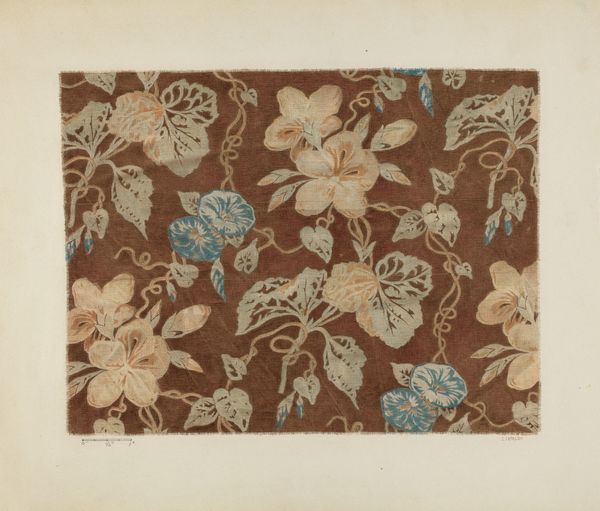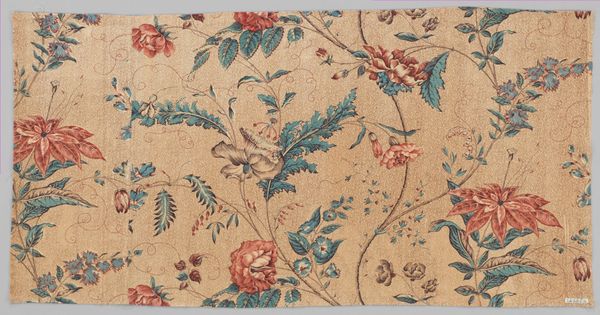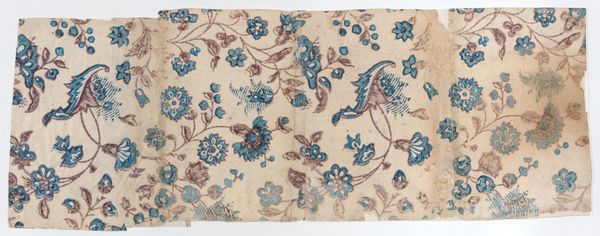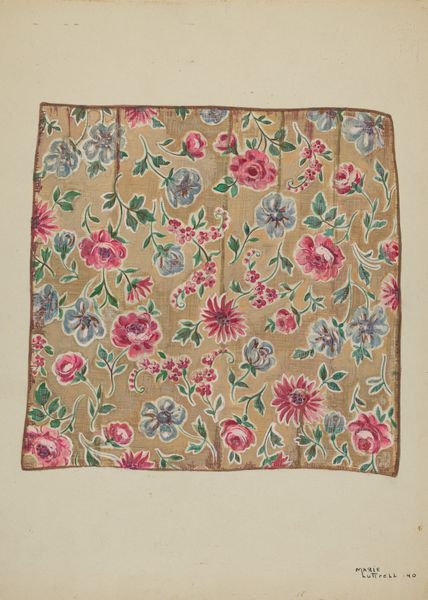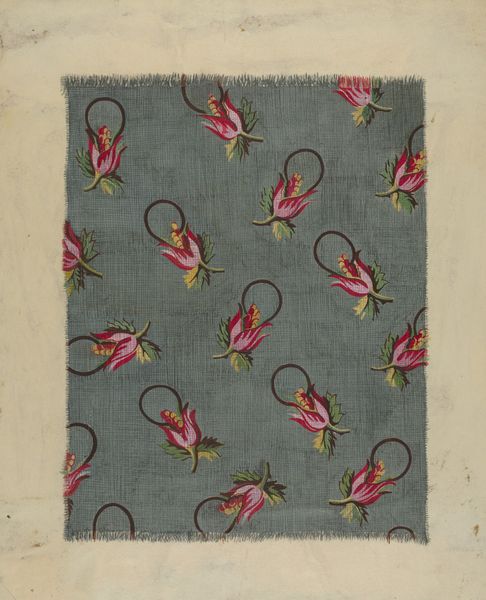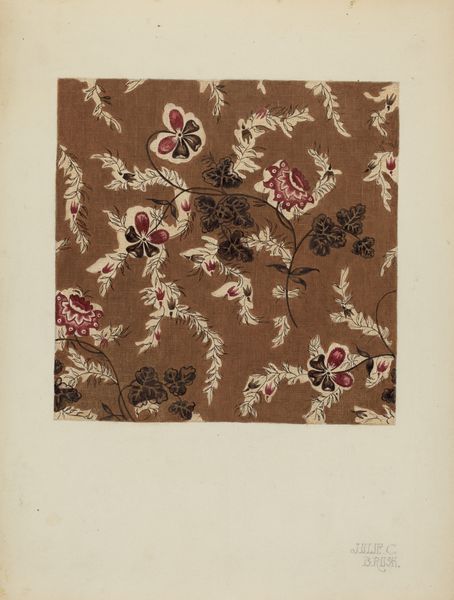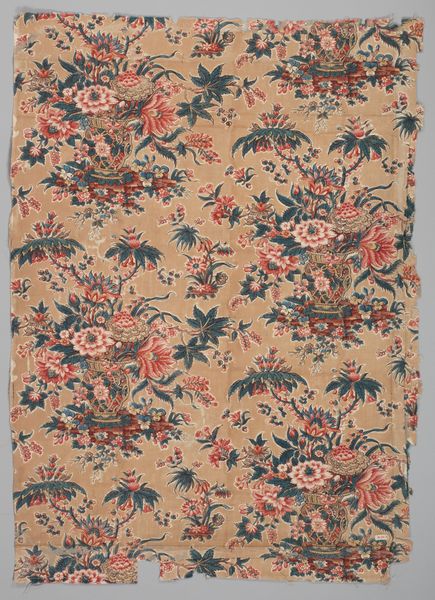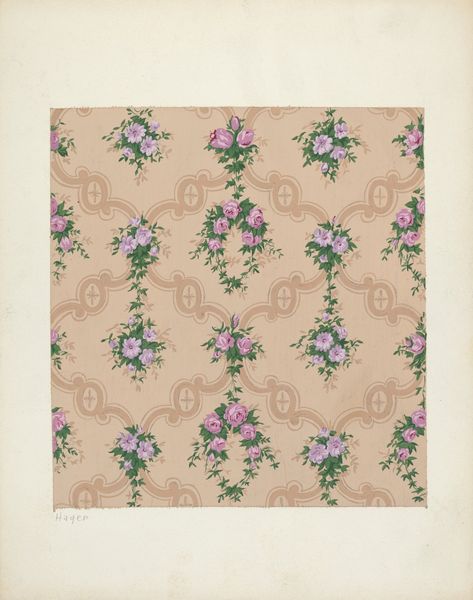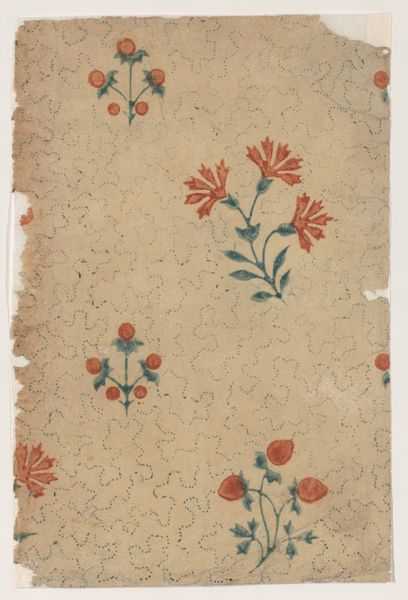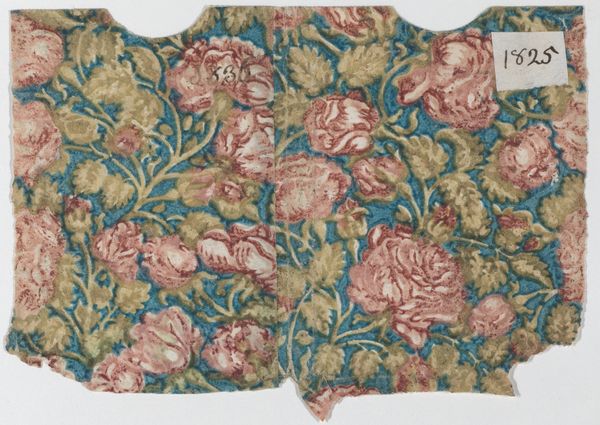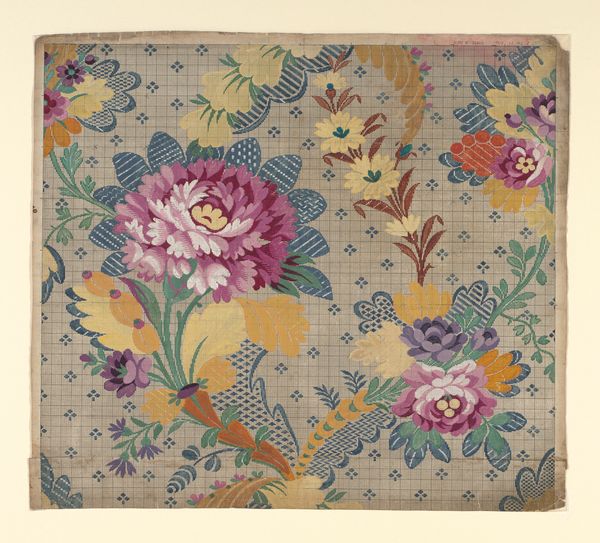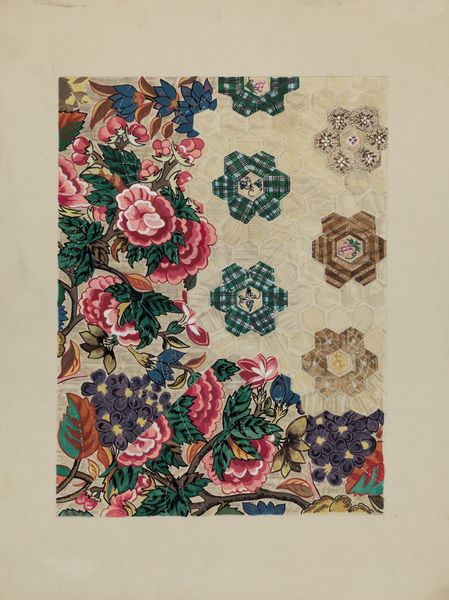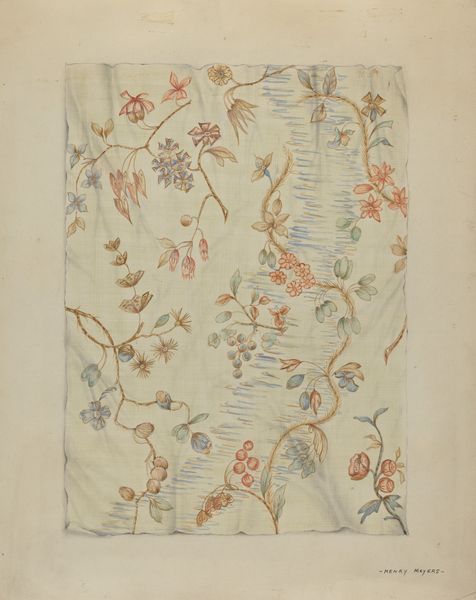
drawing, textile, watercolor
#
drawing
#
water colours
#
pattern
#
textile
#
watercolor
#
watercolor
Dimensions: overall: 41.8 x 50.3 cm (16 7/16 x 19 13/16 in.) Original IAD Object: 14" long; 14" wide
Copyright: National Gallery of Art: CC0 1.0
Curator: Here we have “Chintz,” a watercolor drawing on textile by Sylvia Dezon, created around 1939. Editor: It's such a calming pattern. The soft colors and scattered floral arrangement feel very homey, but also almost wistful, perhaps reflective of the interwar period. Curator: Absolutely. Considering the era, this design speaks volumes. Mass production of textiles during that time heavily impacted women's roles in the workforce and home. The intricate floral pattern also alludes to a rising trend of interest in feminized aesthetics that challenged the increasingly polarized gender constructs of the pre-war period. Editor: I see how the artist balances tradition and subtle rebellion within the image, echoing the sentiment of many at the time. Those repeated floral motifs almost act as a psychological map, marking safe spaces in turbulent times. Are we looking at direct influences from earlier textiles? I detect, perhaps, subtle connections to William Morris. Curator: Indeed. We can’t dismiss the history of “chintz,” itself an import, an adoption of Indian textile artistry appropriated into European aesthetics during colonial times. The design borrows, perhaps unconsciously, from that tangled history, reflecting how domestic crafts were shaped by colonial power structures, which resonates powerfully when considering a woman designing it during the start of World War II. Editor: I notice the strategic use of color too. Blue leaves aren't realistic but add an unexpected counterpoint to the expected pink and red flowers. That disruption creates visual tension, preventing the pattern from becoming too saccharine. Curator: Exactly, and that slight visual dissonance can be interpreted as the beginning of modernist deconstruction of previously established aesthetic structures. Considering Dezon's approach and choices, her design can be viewed through multiple interpretive lenses, spanning economics, gender politics, and art history, and this adds profound depth to what might initially seem merely decorative. Editor: Ultimately, a compelling image revealing complex issues of gender and artistry woven into something meant for the domestic space. Thank you for unveiling the social currents humming quietly through this drawing! Curator: A vital reminder that domestic art possesses its own radical politics. Thank you for delving into the hidden depths with me.
Comments
No comments
Be the first to comment and join the conversation on the ultimate creative platform.
